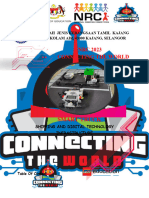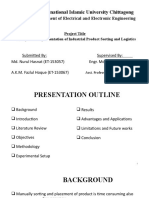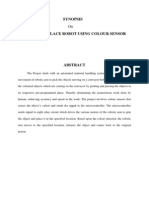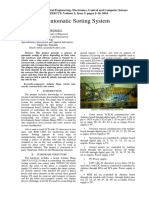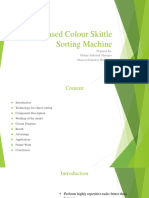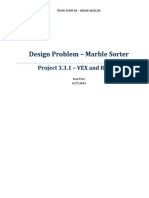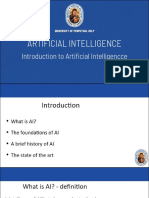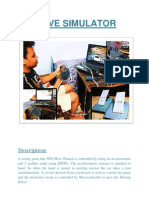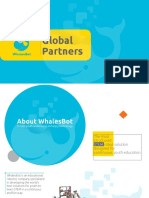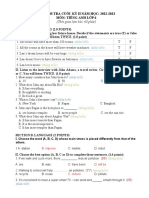0% found this document useful (0 votes)
99 views20 pagesSmart Segregator
This document presents a project proposal for a smart robotic parcel segregator. It includes sections on the student team, project idea, proposed robotic solution, parts used, building progression, social impact and innovation potential, and references. The key points are:
1) The robotic solution involves a conveyor belt system with color and ultrasonic sensors to sort parcels by color code representing delivery destinations.
2) Parts used include LEGO EV3 bricks, motors, sensors and plastic bottles to simulate parcels.
3) The building progression shows the conveyor belt mechanisms and sorting arms controlled by programming to route parcels to different delivery trucks.
Uploaded by
Lydia MirzaCopyright
© © All Rights Reserved
We take content rights seriously. If you suspect this is your content, claim it here.
Available Formats
Download as DOCX, PDF, TXT or read online on Scribd
0% found this document useful (0 votes)
99 views20 pagesSmart Segregator
This document presents a project proposal for a smart robotic parcel segregator. It includes sections on the student team, project idea, proposed robotic solution, parts used, building progression, social impact and innovation potential, and references. The key points are:
1) The robotic solution involves a conveyor belt system with color and ultrasonic sensors to sort parcels by color code representing delivery destinations.
2) Parts used include LEGO EV3 bricks, motors, sensors and plastic bottles to simulate parcels.
3) The building progression shows the conveyor belt mechanisms and sorting arms controlled by programming to route parcels to different delivery trucks.
Uploaded by
Lydia MirzaCopyright
© © All Rights Reserved
We take content rights seriously. If you suspect this is your content, claim it here.
Available Formats
Download as DOCX, PDF, TXT or read online on Scribd
/ 20
